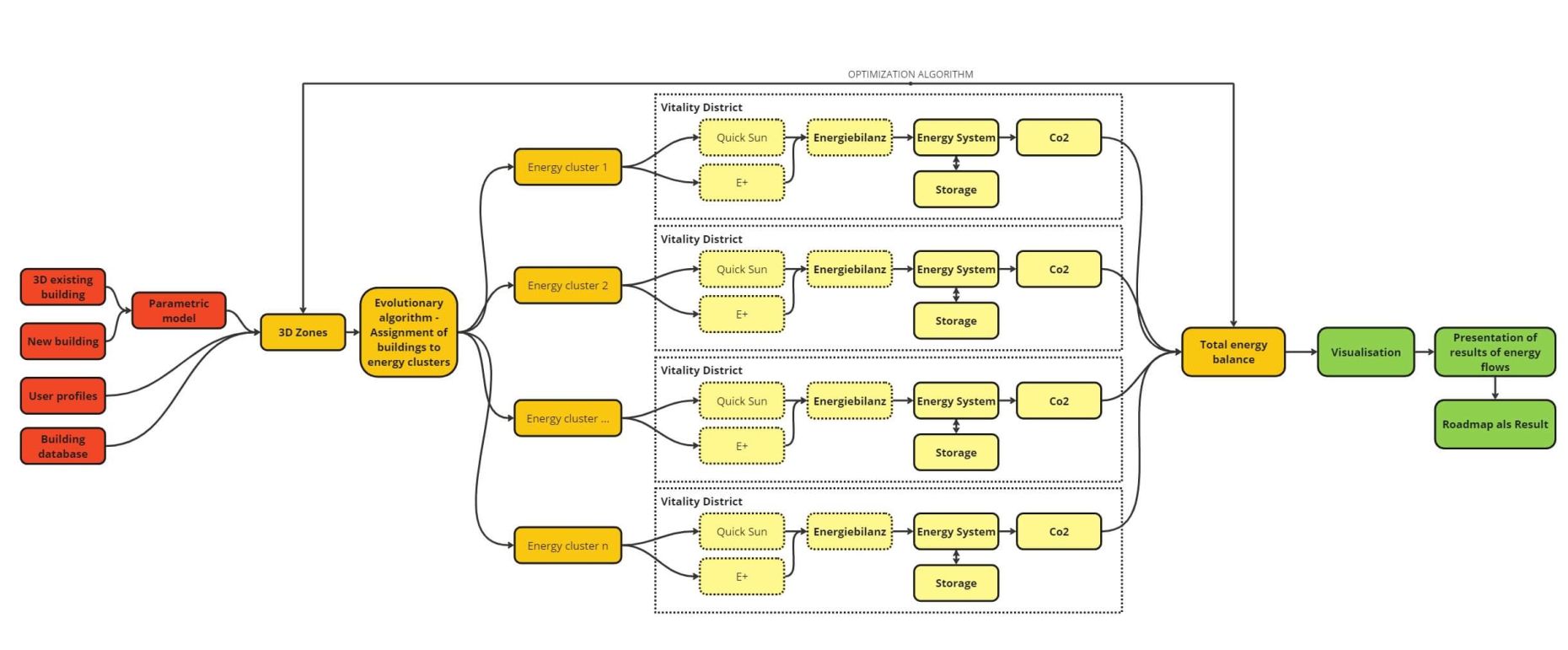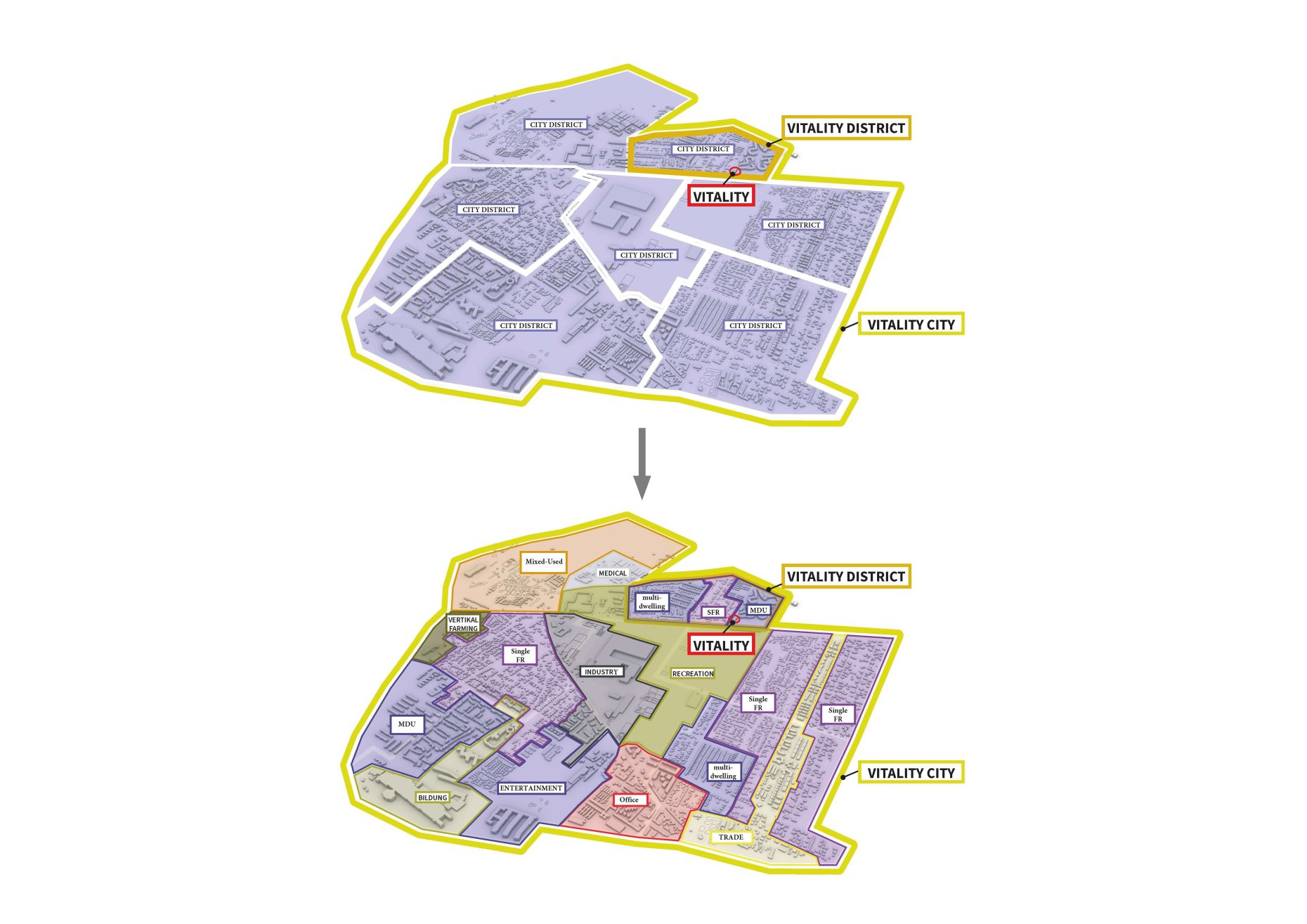Vitality City - Holistic energy strategies for cities in transition
Short Description
The path to climate-neutral cities and municipalities inevitably leads via overall energy balances of the areas under consideration, which can be used as a basis for possible measures, use of energy synergies, renovations or other optimizations. Temporary and local energy surpluses can thus be made visible and harnessed.
The typical way to determine energy balances for cities and municipalities is usually by compiling energy consumption data. The result is an actual state assessment without the possibility of directly visualizing synergies through energy flows, energy storage, renovations or the consideration of renewable energy resources.
Dynamic calculation models, on the other hand, are able to calculate hourly energy balances of complex systems and thus map the direct influences of climate, usage behaviour and renewable energy resources. Dynamic calculation models are now available for many areas and details can be simulated with great precision.
The VITALITY and VITALITY DISTRICT projects have already laid the foundations for the rapid, dynamic calculation of energy balances of buildings, urban districts and different energy systems.
VITALITY CITY now enables dynamic energy assessments of entire cities. Buildings, uses and energy systems of cities and municipalities can be automatically recorded using publicly accessible geodata. An automatically generated, parametric model is used directly to determine dynamic energy requirements.
The solar potential of the building surfaces is automatically incorporated into the energy balance. Energy conversion algorithms lead quickly and easily to CO2 emissions and enable an ecological and economic view of the entire urban area. The aim is to obtain information about the energy requirements, energy potential and possible measures for achieving the desired climate neutrality of municipalities, cities and ultimately the entire country.
VITALITY CITY can look at both existing and new urban structures. Urban expansions and their impact on the entire area can be specifically examined. Calculation models that have already been developed are supplemented and combined to form an applicable tool.
All buildings will be automatically recognised by type (use, age...), energy consumption/production profiles and united in one energy network. After analysis, the entire modelled 3D city will be placed in user-friendly environment to provide all necessary outputs for customers. The tool will then be validated and tested at the site in Graz.
The VITALITY CITY tool should be able to use currently available geodata to depict the energy situation and potential of cities or municipalities and derive specific measures for achieving climate neutrality. The applicability of the tool will be tested in the Graz field study.
The findings derived from this will be incorporated into further developments and applications. Insights into missing databases and meaningful publications of existing data, such as energy certificates, are to be initiated.
The transparent and honest handling of CO2 emissions is the cornerstone for a climate-neutral Austria. The knowledge gained can be applied globally and used in the fight against global warming. The project makes a concrete contribution to a sustainable future for our cities.
Project Partners
Project management
Sautter ZT GmbH
Project or cooperation partners
- AIT Austrian Institute of Technology GmbH
- vertical farm institute GmbH
Contact Address
Sautter ZT GmbH
Josefigasse 1
A-8020 Graz
Tel.: +43 (660) 389 55 98
E-mail: office@sautter-zt.at
Web: www.sautter-zt.at


